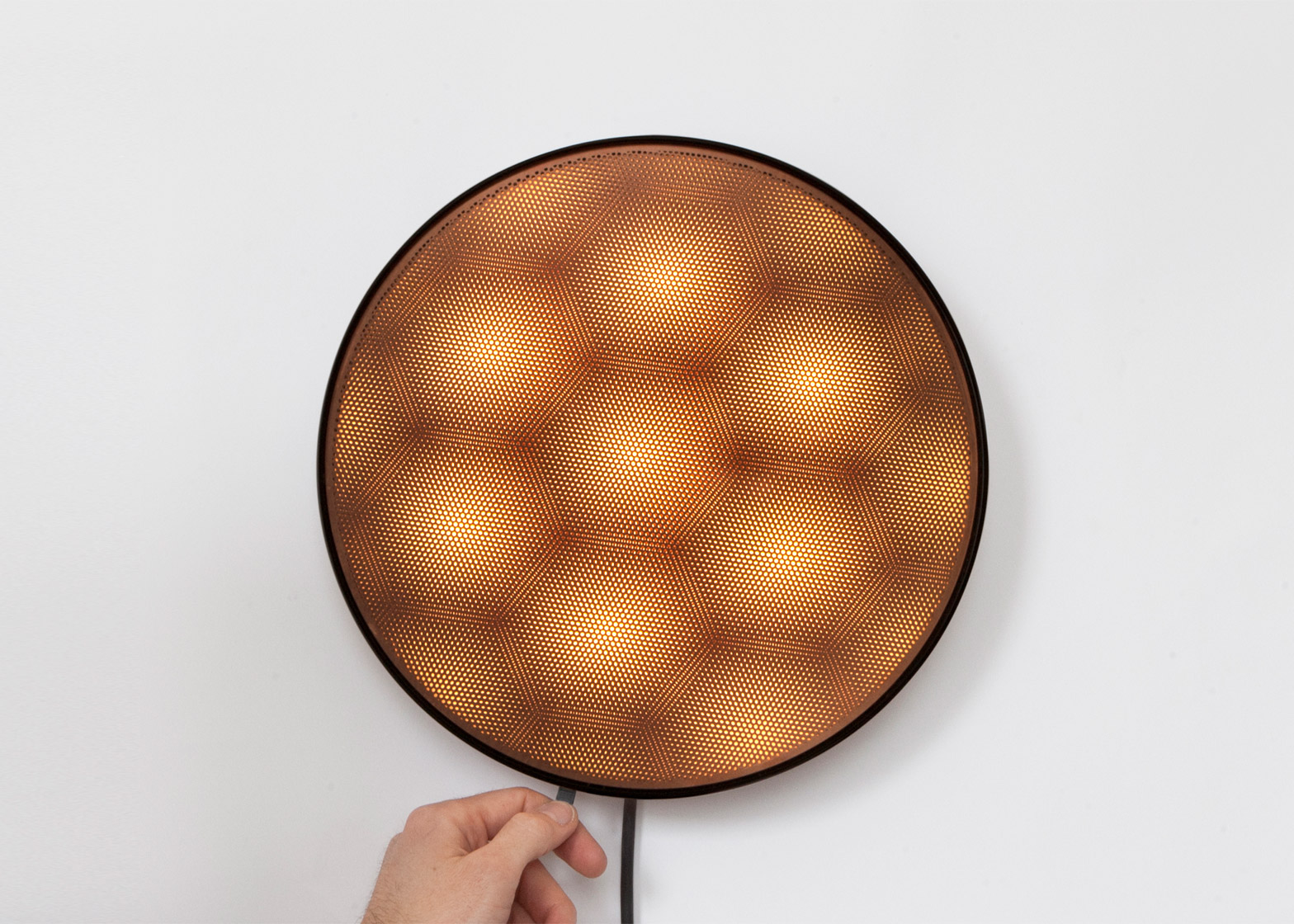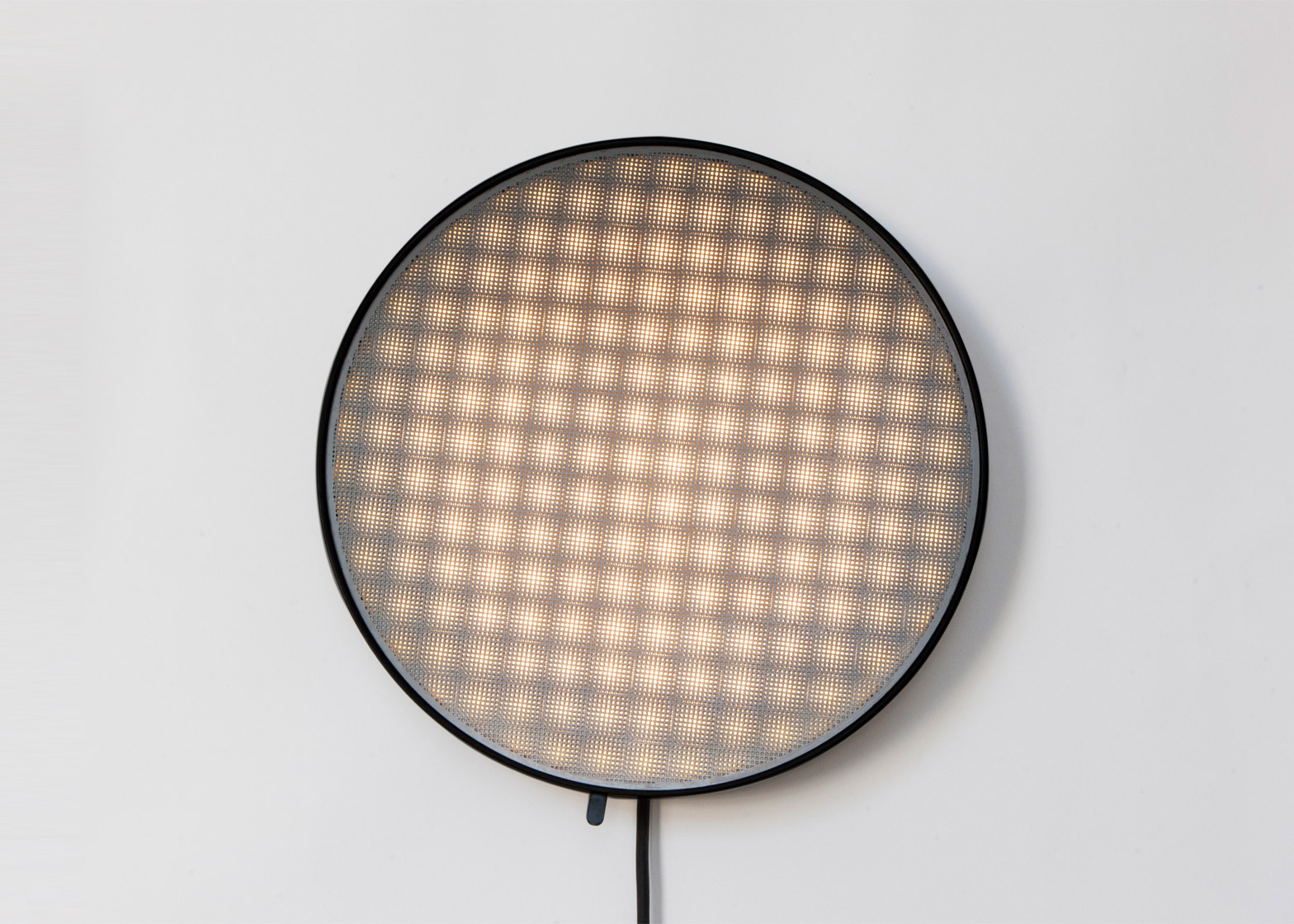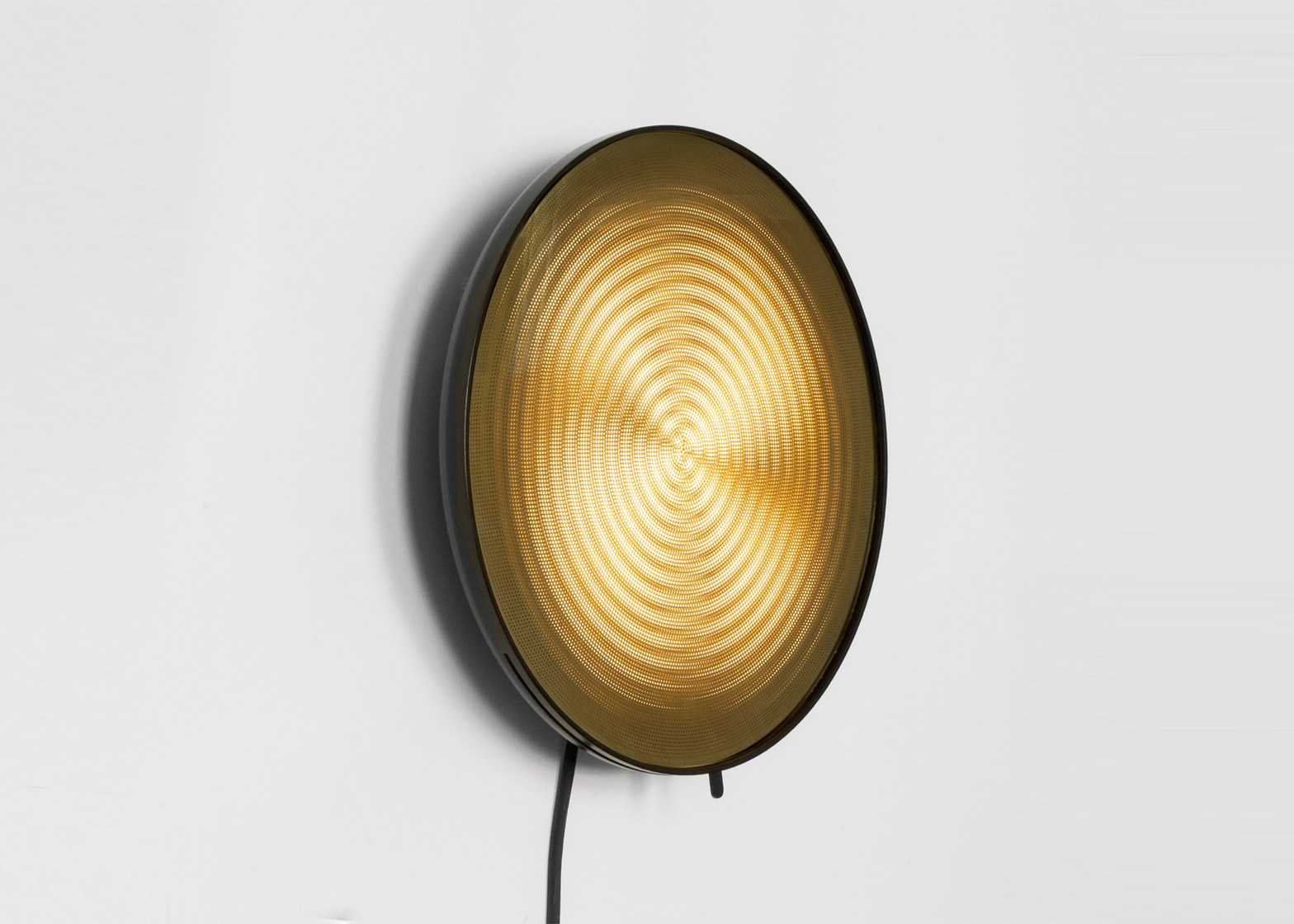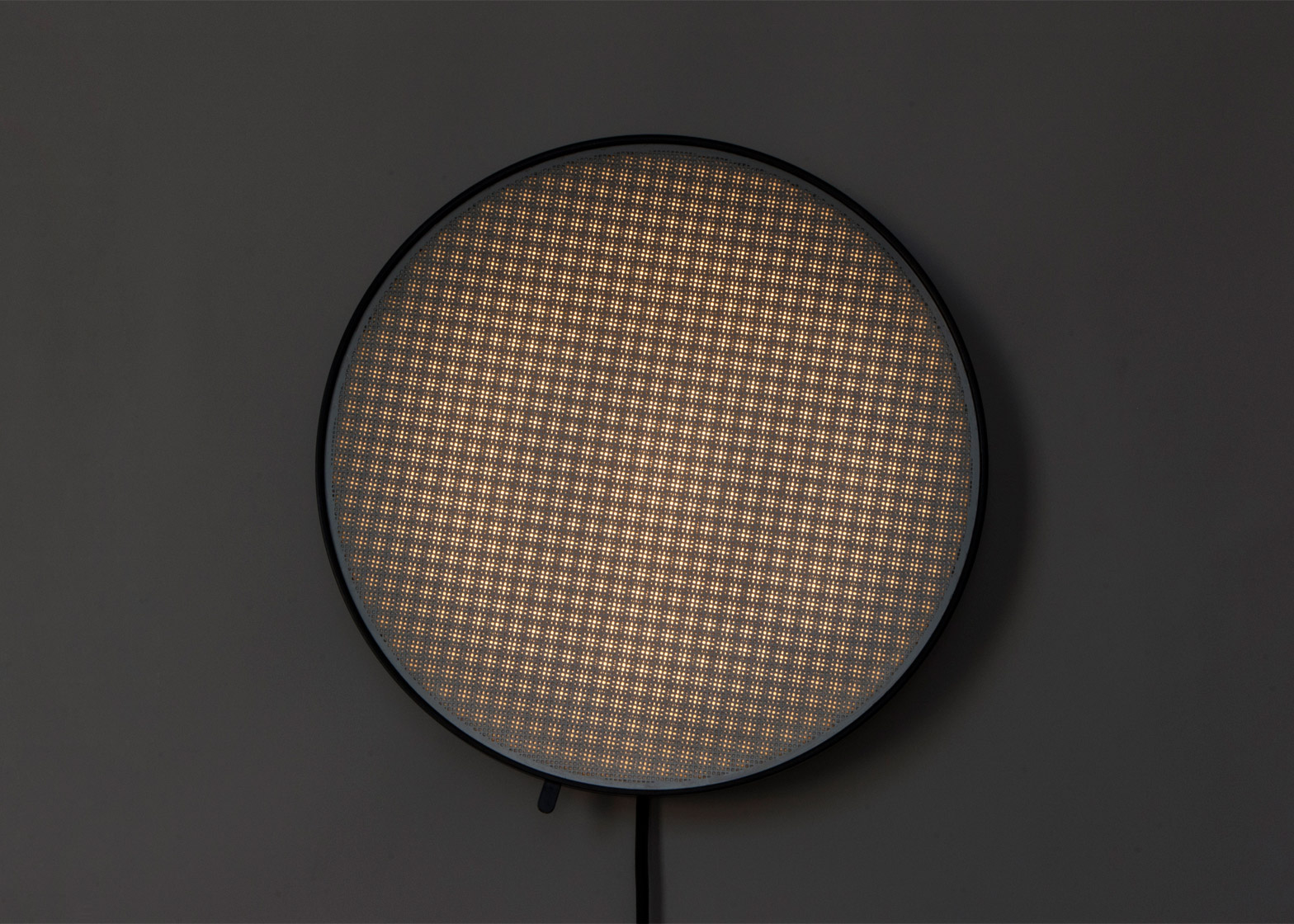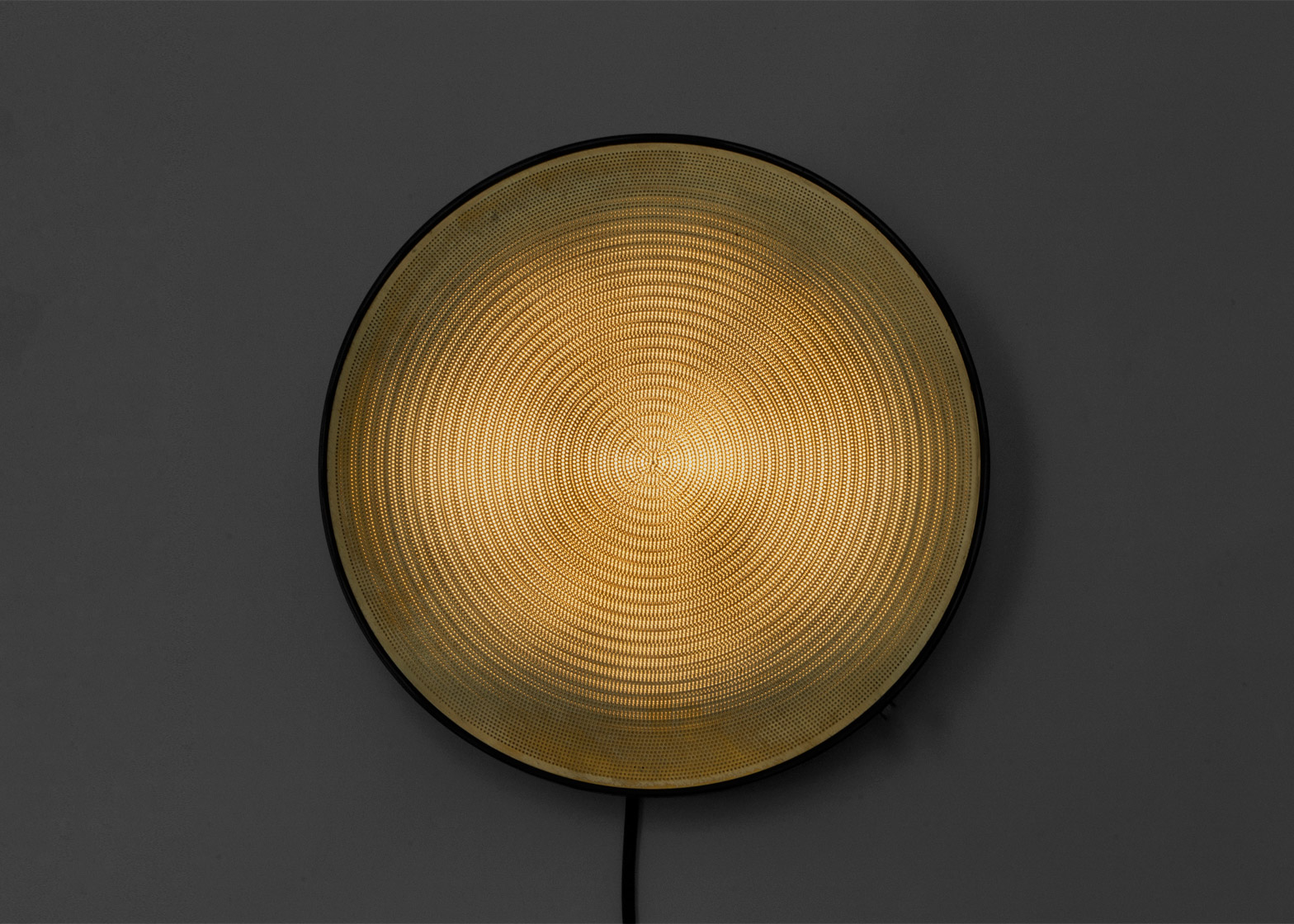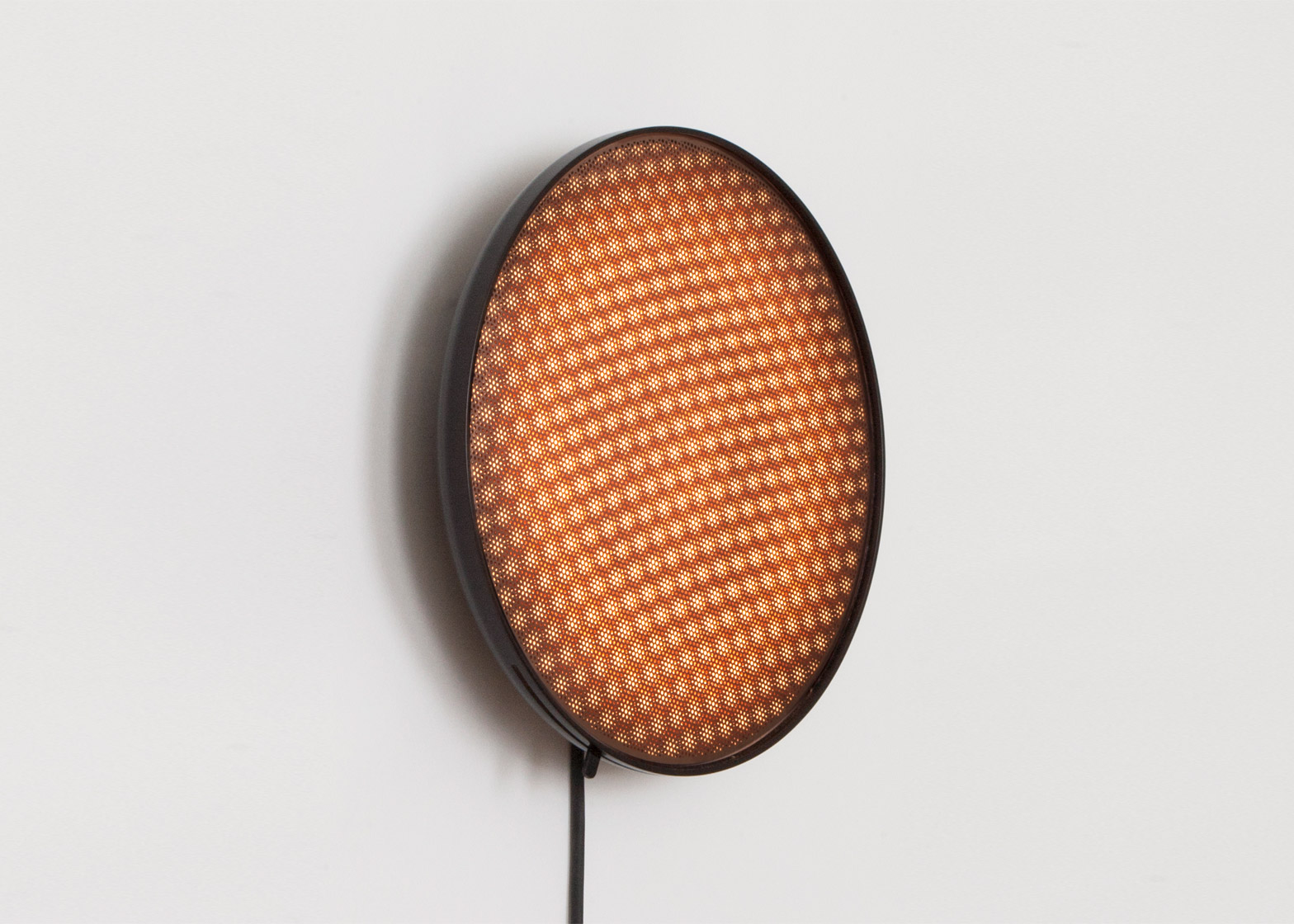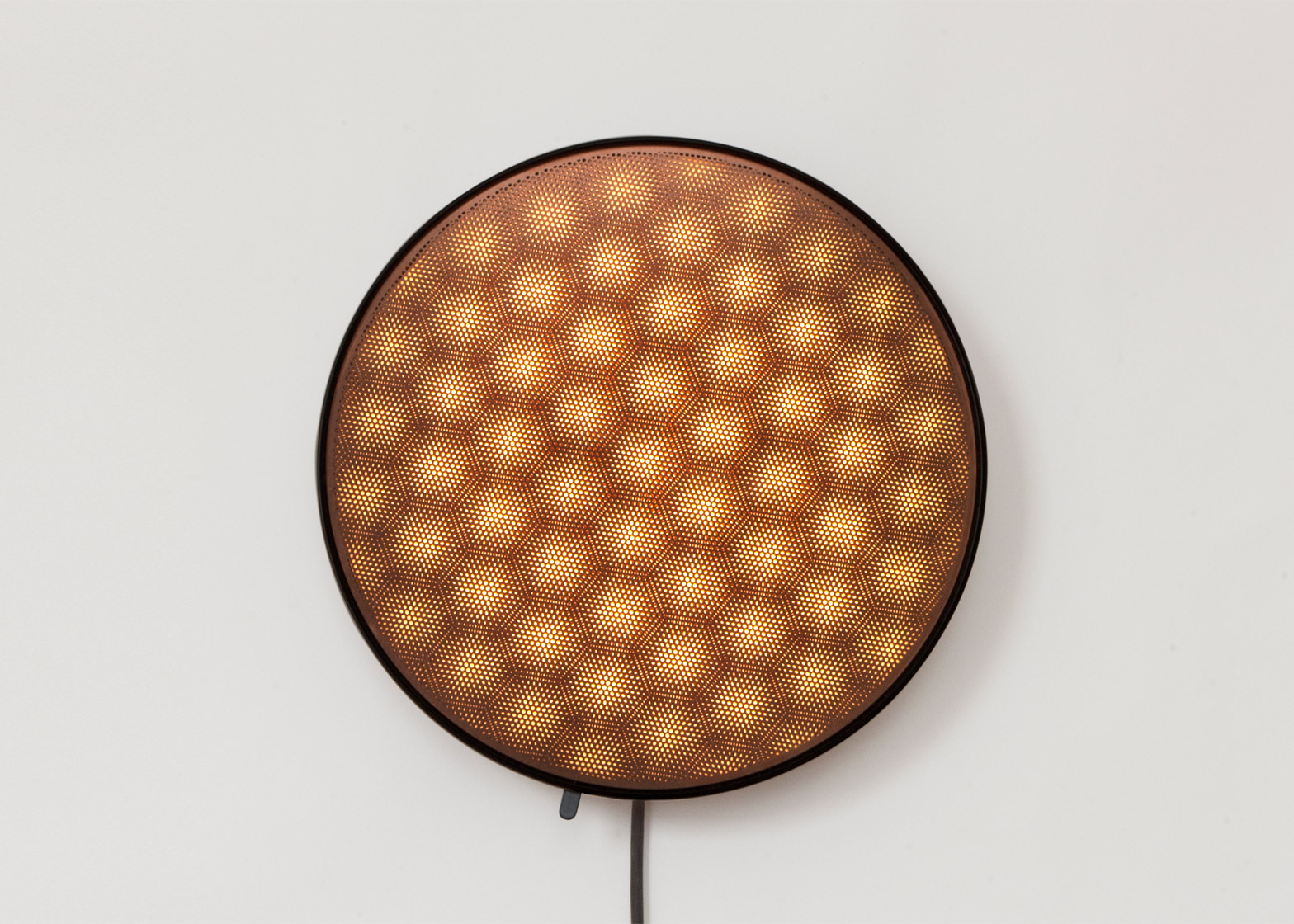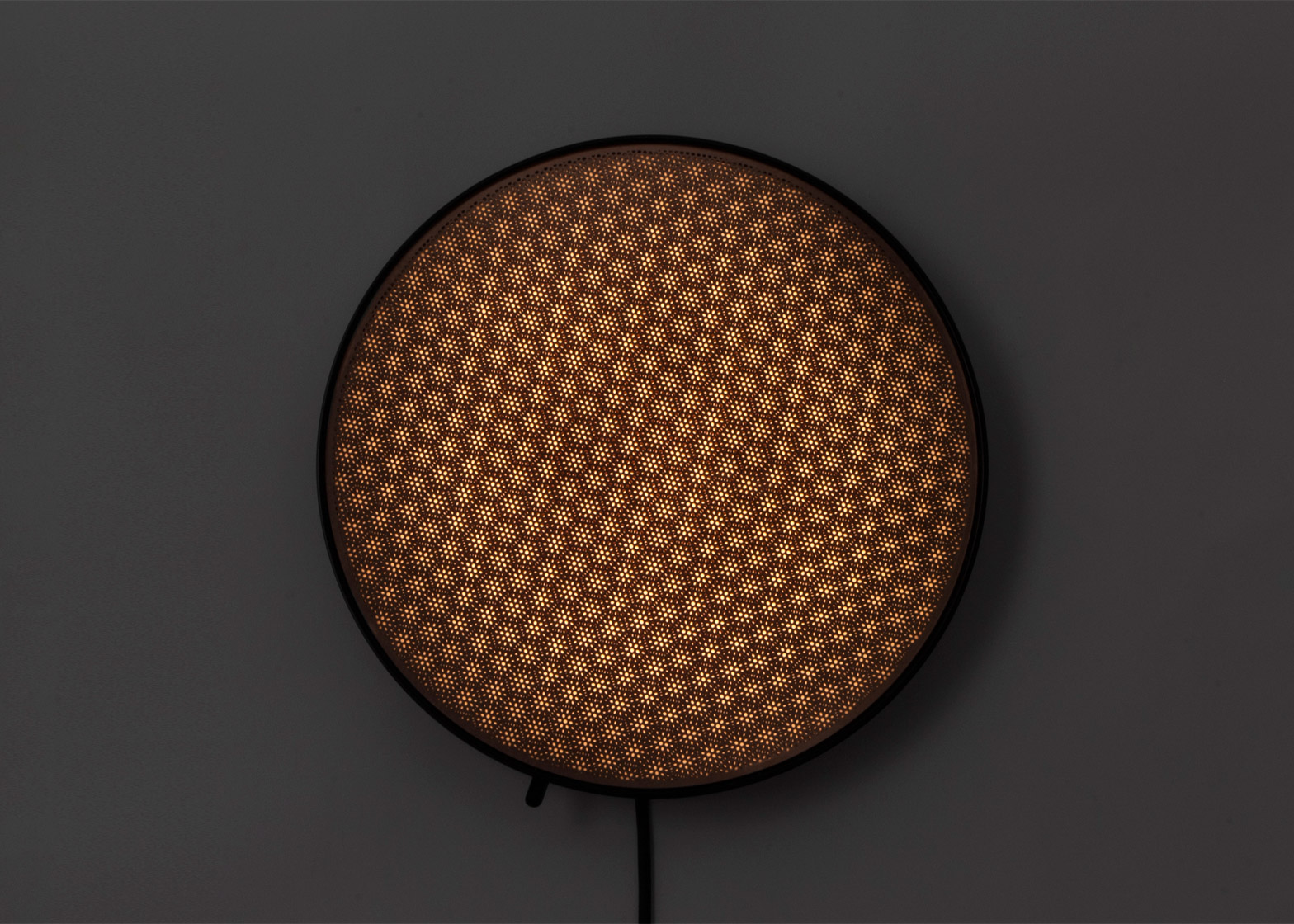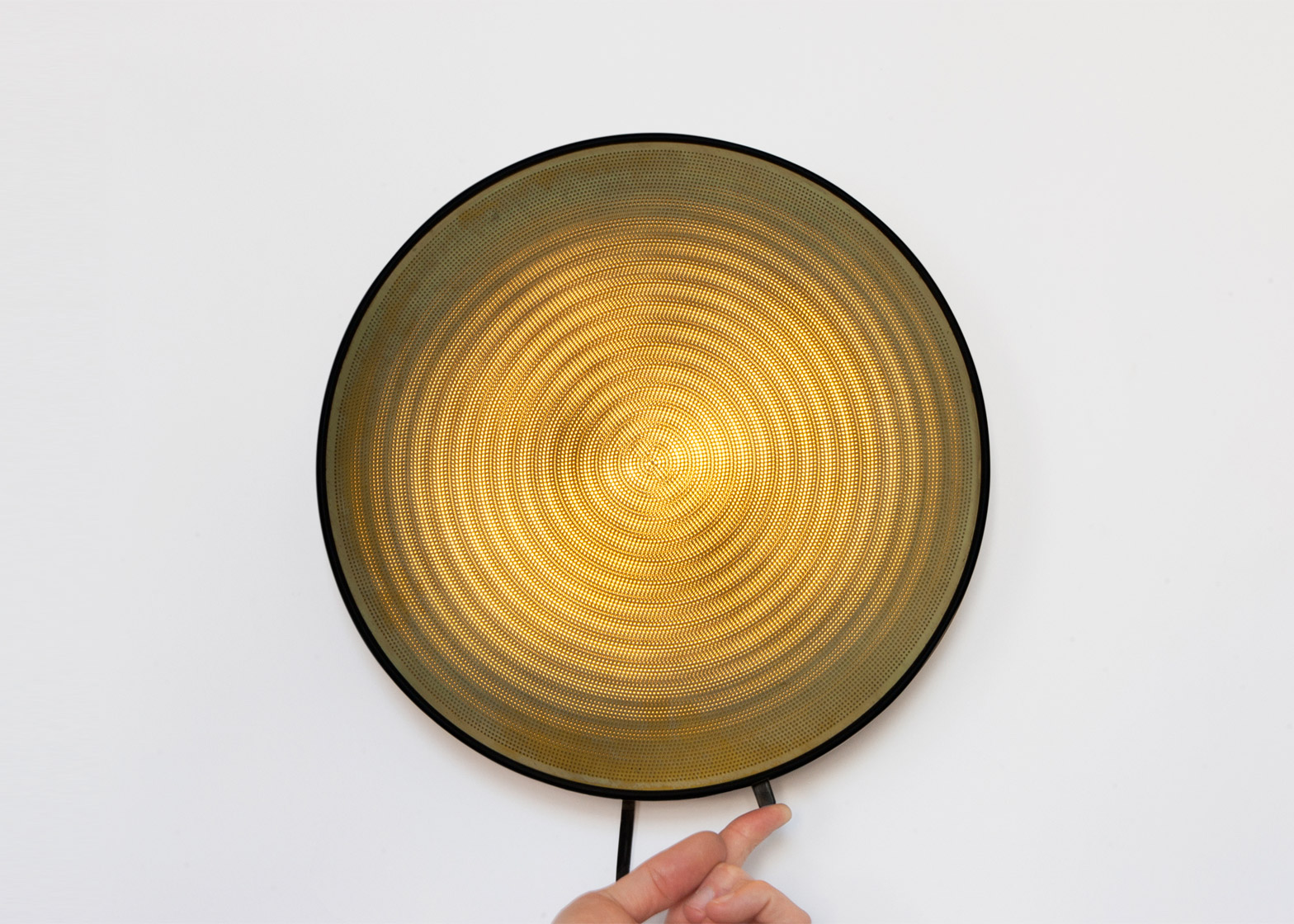Northmodern 2016: Dutch designer David Derksen's collection of wall lamps feature perforated discs that can be turned to reveal a shifting moiré effect (+ slideshow).
The Moiré lights are a continuation of Derksen's collection of layered jewellery, which used overlaid pieces of etched brass and steel to create moving patterns.
While showing the jewellery at exhibitions, Derksen also made an up-scaled version of the brooch out of a rotatable disc with two perforated layers.
"I realised that as a light it would have more impact and people would be attracted to play with it," the designer told Dezeen.
The three lamps are made from patterned circular sections of metal; one brass, one copper and one stainless steel. On each, the front perforated disc doesn't move, but a second disc behind it with an identical pattern is rotated using a tab.
As users spin the circles, the different panels create shifting hexagonal, ring or square shapes that are highlighted by an array of LEDs in the back.
"Whenever two identical patterns overlap, a moiré pattern is created," explained Derksen, who has previously designed glassware based on Victorian laboratory experiments. "What is interesting is that this effect is normally regarded as a negative that you want to prevent, like in photography or video."
"From an abstract point of view I am interested in mathematical patterns that are built into our universe," he added. "Moiré patterns are described as wave patterns, so the patterns that are created with the lamp are kind of mathematical waves."
Graduate designer Hayo Gebauer used a similar method to create moving patterns with a collection of mirrors that showed hidden shapes when rotated to reveal their layers.
Moiré effects also featured in Dutch designer Anouk van de Sande's Print in Motion garments, which produce shifting patterns when the wearer moved.
The Moiré lights were presented at the Northmodern design fair from 14 to 16 January 2016, as part of a collection by Danish brand New Works.

